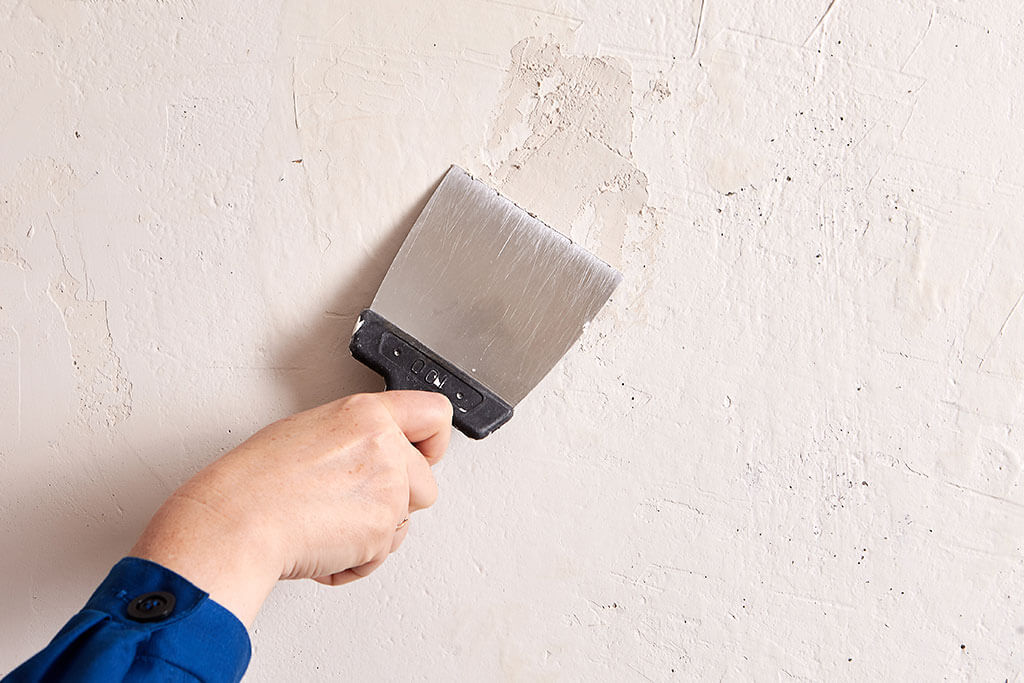How to Paint a Wall That's Already Painted

To know how to paint a wall that’s already painted, you must know what type of paint you’re going to paint over. This will help you to do the job quickly, easily, and efficiently. Even if you don’t have much knowledge or experience, why not give it a go and do it yourself?
After you know what material you’re dealing with, it’s time to prepare your wall. We’re going to cover all of this in this article, so keep reading!
Painting a painted wall: it’s very simple
Painting a wall that’s already painted represents a headache for most people. However, it doesn’t have to be that way. Here, we’ll tell you how to do this depending on the type of paint you already have.

Wall preparation
Before we get into the methods for painting over already painted walls, let’s talk a little about how to prepare the wall. The first thing you have to do is identify any irregularities on the surface. If there are any issues, you should seal and patch all the holes and cracks before you begin painting.
Now, if you have problems with humidity and mold, it could be something more serious. You’ll have to identify its source to prevent it from returning. To do this, you’ll need an expert to correct the cause of this damage. Equally, as we mentioned above, you’ll have to repair any cracks and fill any holes because the wall should be smooth before you begin to paint.
Among the implements that you’ll need to repair any cracks are coarse sandpaper, plaster to repair, a spatula to fill, a mask to avoid breathing in the dust, and gloves. If you feel that you can’t complete this task, contact a specialized service or professional.
How to paint a wall that’s been painted with plastic paint
If your wall is already painted with plastic paint, you’ll need to sand the entire surface, only then can all the old paint be removed. It’s a job that you can do by hand, but it’s tiring and time-consuming.
You can also do this job with the help of an electric sander or polisher. However, if you don’t know how to use this tool, it’s best to use the help of a professional because the wall can be affected.
After you’ve completed this work, if there are gaps and cracks, seal them and let them dry. Clean the surface well and simply repaint it according to your tastes.
How to paint with plastic paint

To paint a wall with plastic paint you must apply a few coats with a paint brush or roller. By doing this, you’ll avoid having areas that are darker than others or the color underneath seeping through. Between three and four coats will be enough to achieve this goal.
This type of paint offers an advantage in that you don’t need to apply a white undercoat to cover the color that’s already there, as long as the new tone is darker than the previous one. On the other hand, if you’re going to paint your wall in a lighter color, you’ll need to apply white paint or a light gray undercoat first.
How to paint a wall that’s already painted with tempera
Tempera is one of the most common, inexpensive, and easy-to-use paints. Its great advantage is that it allows the walls to breathe and you can paint on one layer and then another in quick succession without any problems.
That’s right, it’s that easy! To paint over tempera, you just have to make sure the surface is clean and undamaged. Next, prep your paint, make sure there are no lumps, and get to work. Its application is simple and fast.
From tempera to plastic paint
If you don’t want to use tempera paint and prefer something more durable, just repair the wall. Simply ensure that the surface is very smooth and paint with your preferred choice.
How do you know if the wall is already painted with tempera or with plastic paint?

Identifying what material the wall you want to paint is painted with is a simple matter. Just pass the palm of your hand over the surface and identify if there are any traces of paint left on it. You can deduce that it’s tempera paint if it produces a dust-like residue, if there’s nothing there, it’ll be plastic paint.
You must remember that tempera has a sandy texture, somewhat grainy as if it were chalk. In contrast, plastic paint is smooth and doesn’t create residue when it’s dry. In fact, it’s water-resistant.
To know how to paint a wall that’s already painted, you must know what type of paint you’re going to paint over. This will help you to do the job quickly, easily, and efficiently. Even if you don’t have much knowledge or experience, why not give it a go and do it yourself?
After you know what material you’re dealing with, it’s time to prepare your wall. We’re going to cover all of this in this article, so keep reading!
Painting a painted wall: it’s very simple
Painting a wall that’s already painted represents a headache for most people. However, it doesn’t have to be that way. Here, we’ll tell you how to do this depending on the type of paint you already have.

Wall preparation
Before we get into the methods for painting over already painted walls, let’s talk a little about how to prepare the wall. The first thing you have to do is identify any irregularities on the surface. If there are any issues, you should seal and patch all the holes and cracks before you begin painting.
Now, if you have problems with humidity and mold, it could be something more serious. You’ll have to identify its source to prevent it from returning. To do this, you’ll need an expert to correct the cause of this damage. Equally, as we mentioned above, you’ll have to repair any cracks and fill any holes because the wall should be smooth before you begin to paint.
Among the implements that you’ll need to repair any cracks are coarse sandpaper, plaster to repair, a spatula to fill, a mask to avoid breathing in the dust, and gloves. If you feel that you can’t complete this task, contact a specialized service or professional.
How to paint a wall that’s been painted with plastic paint
If your wall is already painted with plastic paint, you’ll need to sand the entire surface, only then can all the old paint be removed. It’s a job that you can do by hand, but it’s tiring and time-consuming.
You can also do this job with the help of an electric sander or polisher. However, if you don’t know how to use this tool, it’s best to use the help of a professional because the wall can be affected.
After you’ve completed this work, if there are gaps and cracks, seal them and let them dry. Clean the surface well and simply repaint it according to your tastes.
How to paint with plastic paint

To paint a wall with plastic paint you must apply a few coats with a paint brush or roller. By doing this, you’ll avoid having areas that are darker than others or the color underneath seeping through. Between three and four coats will be enough to achieve this goal.
This type of paint offers an advantage in that you don’t need to apply a white undercoat to cover the color that’s already there, as long as the new tone is darker than the previous one. On the other hand, if you’re going to paint your wall in a lighter color, you’ll need to apply white paint or a light gray undercoat first.
How to paint a wall that’s already painted with tempera
Tempera is one of the most common, inexpensive, and easy-to-use paints. Its great advantage is that it allows the walls to breathe and you can paint on one layer and then another in quick succession without any problems.
That’s right, it’s that easy! To paint over tempera, you just have to make sure the surface is clean and undamaged. Next, prep your paint, make sure there are no lumps, and get to work. Its application is simple and fast.
From tempera to plastic paint
If you don’t want to use tempera paint and prefer something more durable, just repair the wall. Simply ensure that the surface is very smooth and paint with your preferred choice.
How do you know if the wall is already painted with tempera or with plastic paint?

Identifying what material the wall you want to paint is painted with is a simple matter. Just pass the palm of your hand over the surface and identify if there are any traces of paint left on it. You can deduce that it’s tempera paint if it produces a dust-like residue, if there’s nothing there, it’ll be plastic paint.
You must remember that tempera has a sandy texture, somewhat grainy as if it were chalk. In contrast, plastic paint is smooth and doesn’t create residue when it’s dry. In fact, it’s water-resistant.







